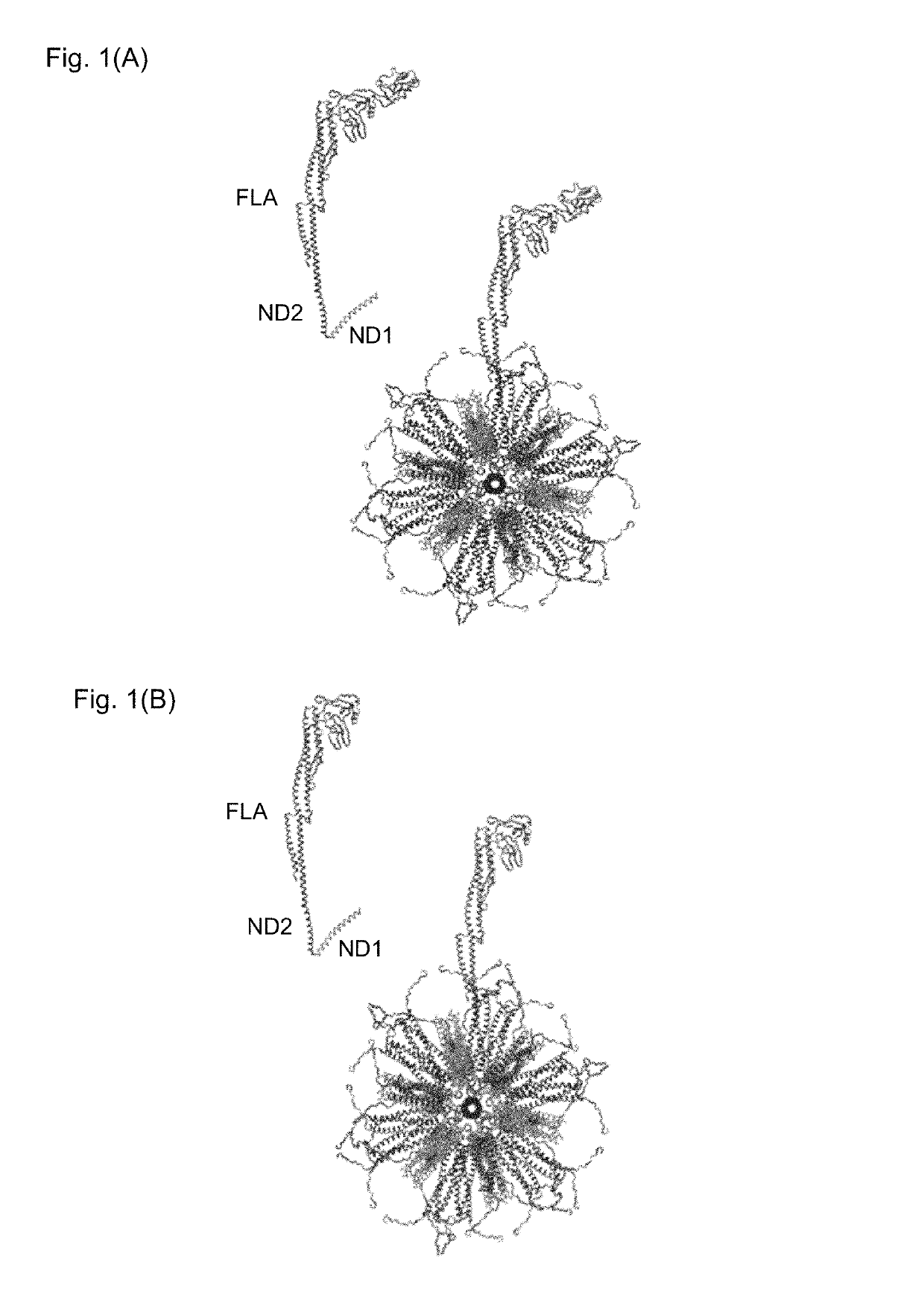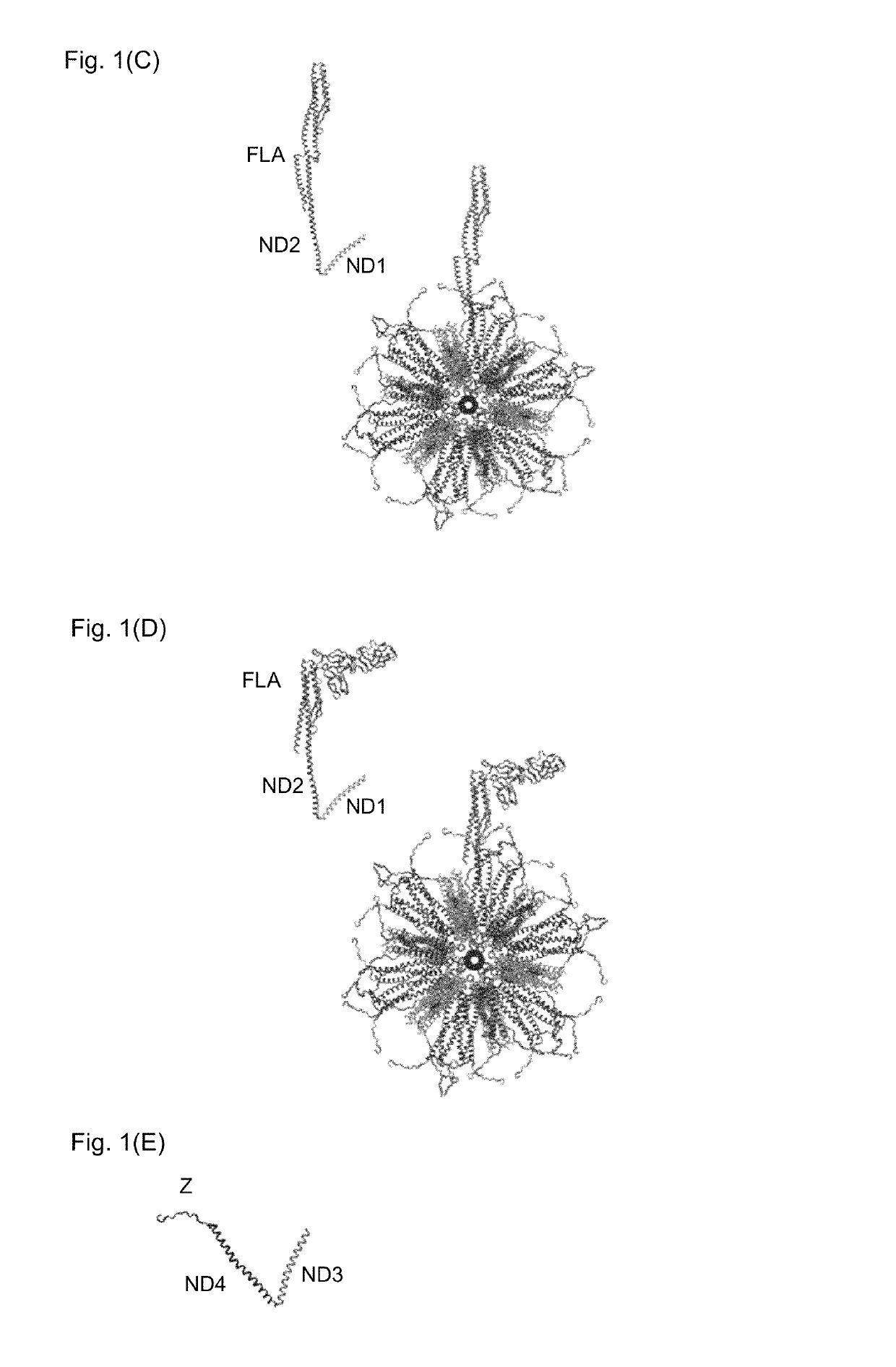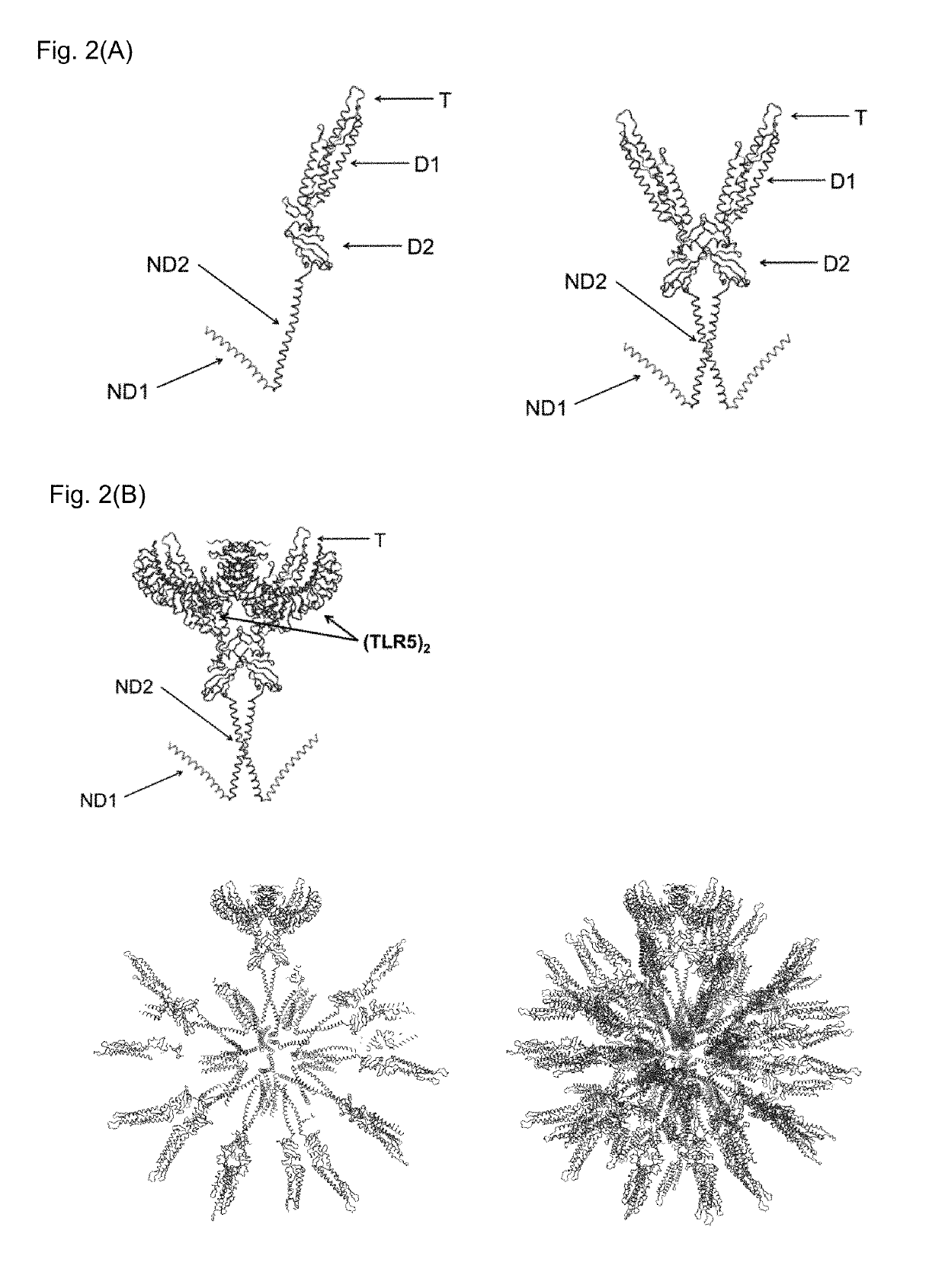Flagellin-containing protein nanoparticles as a vaccine platform
a technology of protein nanoparticles and vaccines, which is applied in the field of self-assembling protein nanoparticles, can solve the problems of not even being used in animal experiments, many adjuvants have significant limitations in their use, and the potential of inflammatory immune responses of flagellin
- Summary
- Abstract
- Description
- Claims
- Application Information
AI Technical Summary
Benefits of technology
Problems solved by technology
Method used
Image
Examples
example 1
[0207]The DNA coding for the nanoparticle constructs were prepared using standard molecular biology procedures. Plasmids containing the DNA coding for the protein sequence LONG-D2-D1-ori
[0208]
(SEQ ID NO: 15)MGHHHHHHASWRWDGGLVPRGSWQTWNARWDQWSNDWNAWRSDWQAWRDDWARWRALWMGGRLLLRLEELERRLEELERRLEELERFVAAWTLRVRALERRLEELERRIEEIARGSGSSARLSDLEANNAVKGESKITVNGAEYTANATGDKITLAGKTMFIDKTASGVSTLINEDAAAAKKSTANPLASIDSALSKVDAVRSSLGAIQNRFDSAIGSRNANDGISIAQTTEGALNEINNNLQRVRELSVQATNGTNSDSDLKSIQDEIQQRLEEIDRVSNQTQFNGVKVLSQDNQMKIQVGANDGETITIDLQKIDVKSLGLDGFNVNGPKEATVGDLKSSFKNVTGYDTYAAGADKYRVDINSGAV
was constructed by cloning into the NcoI / EcoRI restriction sites of the basic SAPN expression construct of FIG. 3.
[0209]For this construct there is no mixing / co-assembly step of two different constructs. The vaccine immunogen will be generated by covalently attaching the vaccine epitopes such as nicotine to the carrier already incorporating the flagellin derivative, preferentially to the lysine residues.
[0210]This cons...
example 2
n
[0211]The plasmids were transformed into Escherichia coli BL21 (DE3) cells, which were grown in Luria broth with ampicillin at 37° C. Expression was induced with isopropyl β-D-thiogalactopyranoside. Four hours after induction, cells were removed from 37° C. and harvested by centrifugation at 4,000×g for 15 min. The cell pellet was stored at −20° C. The pellet was thawed on ice and suspended in a lysis buffer consisting of 9 M urea, 100 mM NaH2PO4, 10 mM Tris pH 8, 20 mM imidazole, and 0.2 mM Tris-2-carboxyethyl phosphine (TCEP).
[0212]Alternatively also other cell lines can be used for expression, such as KRX cells. In KRX cells expression can be done with the early auto-induction protocol of KRX cells using 0 / N pre-culture at 37 degree with Amp (100 μg / mL) and glucose (0.4%). Diluting the 0 / N pre-cultures 1:100 into the expression culture containing Amp (100 μg / mL), glucose (0.05%) and rhamnose (0.1%) at 25° C. for 24 hours. The protein expression level was assessed by sodium dodec...
example 3
[0213]Cells were lysed by sonication and the lysate was cleared by centrifuging at 30,500×g for 45 min. The cleared lysate was incubated with Ni-NTA Agarose Beads (Qiagen, Valencia, Calif., USA) for at least 1 hour. The column was washed with lysis buffer and then a buffer containing 9 M urea, 500 mM NaH2PO4, 10 mM Tris pH 8, 20 mM imidazole, and 0.2 mM TCEP. The protein was eluted with a pH gradient: 9 M urea, 100 mM NaH2PO4, 20 mM citrate, 20 mM imidazole, and 0.2 mM TCEP. Subsequent washes were done at pH 6.3, 5.9, and 4.5. Following the pH gradient, a gradient of lysis buffer with increasing imidazole strength was used to further elute the protein. Purity was assessed by sodium dodecyl sulfate polyacrylamide gel electrophoresis (SDS-PAGE) as shown in FIG. 5.
PUM
| Property | Measurement | Unit |
|---|---|---|
| pH | aaaaa | aaaaa |
| pH | aaaaa | aaaaa |
| pH | aaaaa | aaaaa |
Abstract
Description
Claims
Application Information
 Login to View More
Login to View More - R&D
- Intellectual Property
- Life Sciences
- Materials
- Tech Scout
- Unparalleled Data Quality
- Higher Quality Content
- 60% Fewer Hallucinations
Browse by: Latest US Patents, China's latest patents, Technical Efficacy Thesaurus, Application Domain, Technology Topic, Popular Technical Reports.
© 2025 PatSnap. All rights reserved.Legal|Privacy policy|Modern Slavery Act Transparency Statement|Sitemap|About US| Contact US: help@patsnap.com



